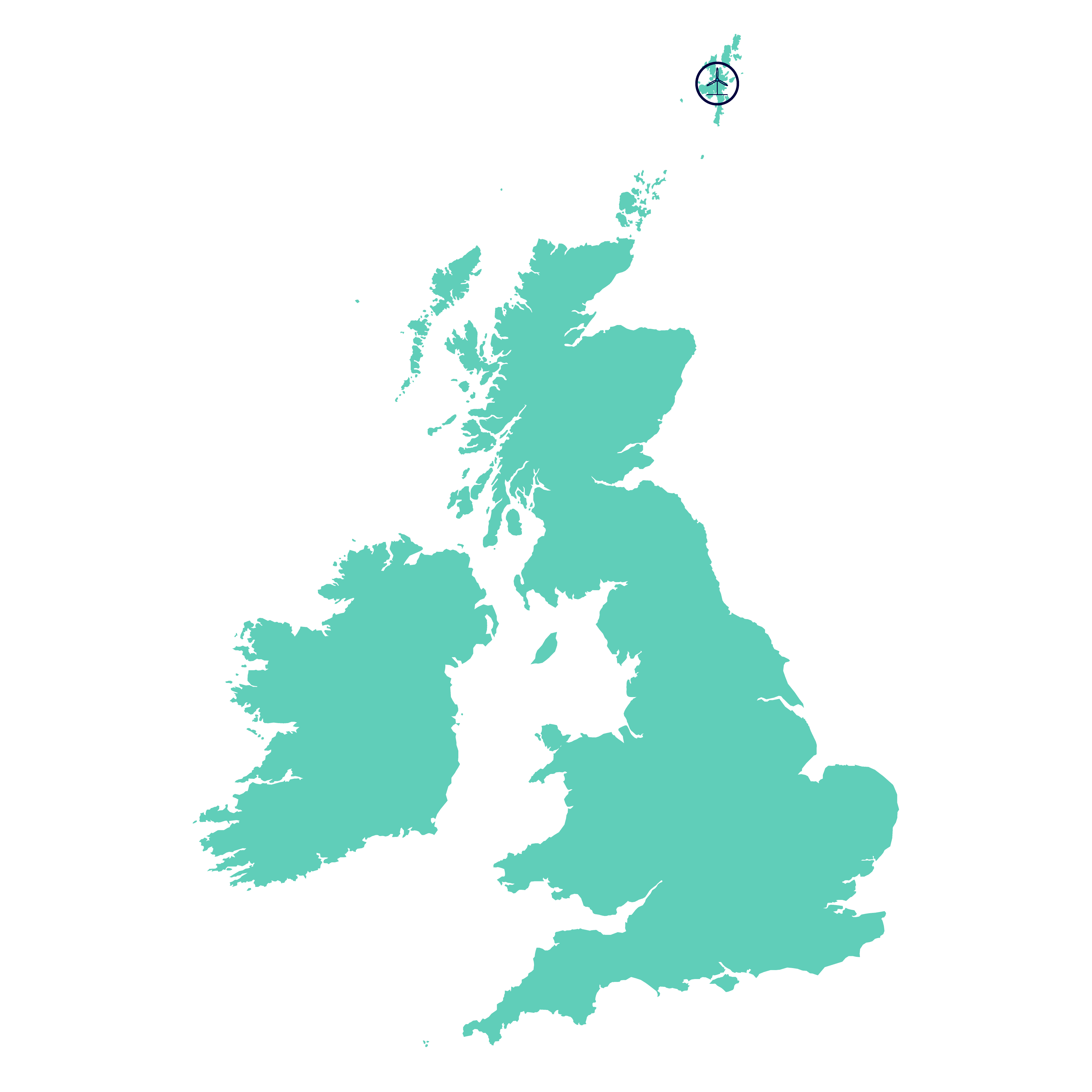Viking Wind Farm

The £580m Viking wind farm is a 103-turbine, 443MW onshore wind farm that harnesses the excellent wind conditions in the Shetland Islands; producing enough energy to power the equivalent of almost half a million homes, including every home in Shetland*.
Completed in September 2024, Viking will play a crucial role in contributing towards the UK and Scotland’s net zero targets.
The original consent for the wind farm was approved by Scottish Ministers in 2012, following a decision by Shetland Islands Council not to object in 2010. A revised application was consented again by Scottish Ministers in May 2019, following approval by Shetland Islands Council in December 2018.
For further information about the Viking wind farm, please visit its dedicated website here.
Benefits
Community Benefit Fund
Viking is committed to a community benefit fund of around £72m (when indexed) over the 25 year lifetime of the wind farm.
The four community council areas which play host to Viking’s turbines will be prioritised in the distribution of these benefits.
Benefits
Boosting Shetland's economy
Viking has generated £80m of investment for Shetland’s economy through construction, and supported roughly 400 jobs. 35 full-time permanent roles are expected to be created during the operational phase to look after the day-to-day operations and maintenance of the wind farm.
Benefits
Connecting Shetland to the GB mainland
The wind farm underpins the Shetland HVDC link and unlock Shetland’s wider renewable energy potential, delivering Shetland’s future security of electricity supply and helping to decarbonise Shetland’s oil and gas sector. In July 2020 Ofgem approved the Final Needs Case for the 600MW HVDC transmission link connecting Shetland to the GB mainland.
Benefits
Improved infrastructure and access
Once construction is complete, Viking will provide a new public road (formerly a project haul road) at Sandwater which will benefit the travelling public in Shetland for decades to come and improve east-west linkage of the public road network.
Viking will also cooperate with the aims and objectives of the Shetland Outdoor Access Forum to improve the public’s access and enjoyment of the wind farm site.
Benefits
Improved biodiversity
Much of the Viking site is located on heavily eroding and degraded peat and is therefore a net emitter of that stored carbon. Viking’s Habitat Management Plan (HMP) has been approved by SEPA, SNH and Shetland Islands Council.
An independent expert advisory group, Shetland Windfarm Environmental Advisory Group (SWEAG) will oversee the comprehensive programme of conservation measures, which include extensive peat restoration over 260 hectares of significantly damaged and eroded habitat.
Additional benefits
The people of Shetland will benefit from a preferred return on Shetland Charitable Trust’s initial financial stake in Viking each year for the lifetime of the wind farm. Shetland Islands Council will benefit directly as a landowner on the site and over 200 crofting families will benefit from 50% of the wider ground rental payments on crofted estates.
* 475,099 homes powered per annum based on annual GB average domestic household consumption base of 3.781MWh published by the Department of Business, Energy and Industrial Strategy (BEIS) as of November 2018, and projected total generation output by Viking Wind Farm of 1,796.35 GWh per annum. Equivalent every home in Shetland claim based on 10,235 recorded households in Shetland, published in Shetland in Statistics 2017 by Shetland Islands Council, 2018.

